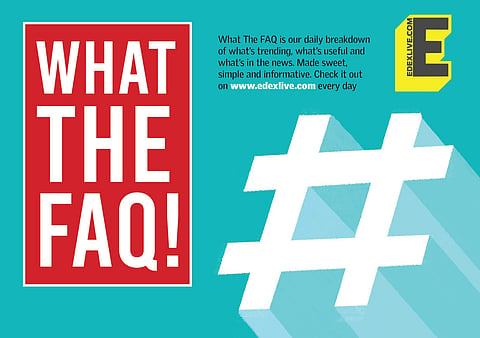

The first lunar eclipse of 2021 is set to occur on Wednesday. This total lunar eclipse is extraordinary as it will be a super-lunar event. Sky gazers will get to see three celestial events at once — a Supermoon, a Red Blood Moon, and a lunar eclipse.
The 2021 lunar eclipse will occur when the earth will come between the sun and the moon and cast a shadow on its only natural satellite. Notably, this will be the first total lunar eclipse since 2019. In the past decade, there have been only nine total lunar eclipses. Here, we break it down for you. What is a total lunar eclipse, why is today special, where can you watch it and more.
What is a total lunar eclipse?
A lunar eclipse occurs when the moon passes directly behind the earth into its shadow. The earth, sun and the moon are either closely or perfectly aligned, with the earth in the middle. The earth’s shadow blocks sunlight from reflecting off the moon, thus resulting in an eclipse – partial or total. A total lunar eclipse is dramatic, as the earth’s shadow (umbra) completely covers the moon.
What is a Supermoon?
The Moon’s orbit around the earth is oval. This means, there are times when the moon is closer to the earth than usual. When a full moon reaches the point closest to the Earth on its elliptical orbit - 28,000 miles roughly - it is called a Supermoon, as it appears larger than usual at the time.
This Supermoon is also being referred to as the super flower moon, as, in some parts of the world a full moon occurring in May is referred to as a flower moon, because of the flowers that bloom in May.
Why is this one being called a Blood Moon?
A Blood Moon occurs when the moon’s colour appears richer than usual - almost blood-red - as it aligns with the sun and earth and comes completely under the earth’s shadow or umbra. The light refracted through the earth’s atmosphere has a reddish-orange hue and can appear redder if there are clouds and dust in the earth's atmosphere.
When and where will it be visible in India?
The total lunar eclipse will not be visible in the national capital as the moon will be below the horizon there for some time, according to the meteorological department.
The lunar eclipse will be visible for a short span of time from the north-eastern parts of India, West Bengal, Odisha and the Andaman and Nicobar Islands, the Ministry of Earth Sciences has informed.
A partial lunar eclipse can be seen in Agartala, Kolkata, Cherrapunji, Cooch Behar, Imphal, Itanagar, Guwahati, Malda, Kohima, Lumding, Puri, Silchar and Digha.
The partial phase of the lunar eclipse will begin at 3.15 pm and end at 6.23 pm in India, while the total phase will begin at 4.39 pm and end at 4.58 pm. The total duration of the eclipse is five hours, two minutes. The total duration of the partial phases is 2 hours, 53 minutes. The duration of the full eclipse is 14 minutes.
The partial eclipse will be visible from Port Blair from 5.38 pm for 45 minutes and a partial eclipse can be seen in West Bengal's Malda and Odisha’s Puri at 6.21 pm for two minutes.
